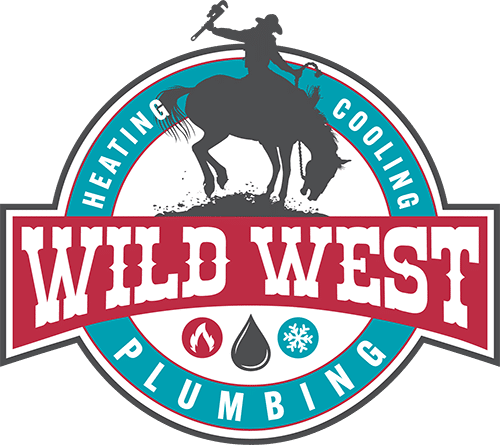Fall is the perfect time to tend to your home’s needs, as it doesn’t demand the urgent attention that summer’s heat or winter’s chill often requires. In many areas, contractors and service professionals are also easier to schedule during this season.
This window of opportunity is ideal for tackling home improvement projects and routine maintenance. Among the many tasks on your fall checklist, begin with your plumbing system. Quietly operating behind the scenes, it’s easy to forget, yet neglecting it can lead to costly damage, especially during freezing temperatures.
To help you stay ahead of potential issues, here’s a comprehensive fall plumbing maintenance guide to get your home ready for winter.
Check for Leaks
The first step in preparing your plumbing system for winter is to check for leaks. They can be especially problematic in unheated areas, where freezing water expands and worsens cracks or gaps. Even small leaks can cause water damage over time, encouraging mold growth or weakening nearby materials.
Signs of leaks include reduced water pressure, stains or discoloration on walls and ceilings, mold growth, unusual dripping or hissing sounds, and higher water bills.
Two simple tests can help:
- Water meter test: Shut off all faucets and appliances, then watch the water meter. If it still moves, you likely have a hidden leak.
- Food coloring test: Add a few drops of food coloring to the toilet tank. If the color shows up in the bowl within 30 minutes, the toilet is leaking.
Remember that leaks can hide in unexpected places, such as under sinks, around water heaters, or even beneath outdoor hose bibs. Walk through your property carefully, checking both indoors and outdoors, and don’t ignore small signs. Calling a licensed plumber to address issues promptly can save you from expensive mid-winter emergencies.
Insulate the Pipes
Pipes in basements, crawlspaces, attics, garages, and exterior walls are most at risk of freezing. When temperatures drop, water inside these pipes can freeze and expand, potentially creating cracks. Once thawed, leaks may occur.
To prevent this, insulate exposed pipes with approved materials such as foam pipe sleeves, fiberglass wraps, or heat tape. Heat tape should always be installed according to manufacturer instructions, as misuse can pose risks.
It’s also a good idea to disconnect outdoor hoses, drain sprinkler lines, and shut off exterior faucets before the first hard freeze. Even frost-proof spigots can fail if a hose is left attached. Taking time in the fall to shut these systems down properly ensures they won’t burst once deep winter arrives.
Clean Your Drains
Fall and winter bring holiday gatherings, which put extra strain on drains. Clogged or slow drains can quickly lead to backups that are both inconvenient and unhygienic.
Clear grease, soap scum, and food particles from sinks and garbage disposals. If your disposal jams, reset it using the built-in button or rotate the flywheel underneath with an Allen wrench. Avoid putting grease, fibrous foods, or hard materials (like bones or plastics) into the disposal.
For bathroom drains, watch for slow drainage, gurgling, or odors. Hair and soap residue are the most common culprits, and while some blockages can be cleared with a simple drain snake, recurring problems often require professional cleaning. Services like hydro jetting can safely clear deep blockages and restore full flow without damaging pipes.
As a preventive measure, consider adding drain strainers to sinks and showers to catch debris before it enters your system. These inexpensive additions save time, money, and frustration down the line. Contact us for drain cleaning, today!
Have Your Water Heater Checked
Your water heater works harder in the colder months, providing hot showers and steady supply for laundry and dishwashing. Scheduling a professional inspection in the fall ensures it’s ready to meet demand.
During a tune-up, a plumber will:
- Inspect the temperature and pressure relief valve
- Check thermostat settings for safe, efficient operation
- Look for rust, leaks, or worn components
- Assess overall performance and recommend repair or replacement if needed
Many water heaters last 8–12 years, but efficiency often drops before the end of their lifespan. If your unit is older and showing signs of wear—such as inconsistent hot water or unusual noises—it may be time to plan for replacement. Taking action in the fall prevents being caught without hot water during the coldest months.
Schedule Professional Plumbing System Maintenance
A licensed plumber can catch issues that homeowners may overlook. Fall is the best season to schedule an inspection because it gives you time to make repairs before freezing weather sets in.
During a maintenance visit, your plumber may:
- Check for hidden leaks in crawlspaces and behind walls
- Verify insulation is intact on exposed pipes
- Test water pressure to prevent strain on fittings
- Inspect shutoff valves for smooth operation
- Winterize outdoor faucets and irrigation systems
Professional inspections not only prevent emergencies but also extend the lifespan of your plumbing system. Small repairs in the fall can save you from burst pipes or water damage when temperatures drop.
Upgrade Your Plumbing
Sometimes maintenance isn’t enough—older or failing plumbing may need replacement. If repairs are constant, consider upgrading sections of your system.
Modern materials like PEX and copper offer greater durability than outdated galvanized steel or polybutylene. Replacing sections of old pipe during a remodel or when you’re already opening walls is a cost-effective way to modernize without repiping the entire house.
Upgrading fixtures can also save water and improve convenience. Many new faucets and fixtures:
- Use 30% less water without sacrificing pressure
- Offer touchless or smart controls to reduce waste
- Feature finishes that resist hard-water spotting
- Come in sleeker designs that update your kitchen or bathroom’s look
If you’re planning larger updates, like replacing countertops or cabinets, it makes sense to update sinks and fixtures at the same time. Coordinating these upgrades avoids rework and ensures your plumbing aligns perfectly with your new layout.
Keep Interior Temperatures Consistent
Your heating system is part of protecting your plumbing. Keep your home heated to at least 55°F, even if you’re away, to prevent pipes from freezing inside walls or unheated areas.
Open cabinet doors under sinks on particularly cold nights to let warm air circulate around supply lines. If you have pipes running along exterior walls, consider leaving faucets on a slow drip during extreme cold spells to keep water moving. These small preventive measures make a big difference in avoiding frozen pipes.
Contact Wild West Plumbing, Heating & Cooling for More Information
Fall is the perfect season to prepare your plumbing system for the months ahead. Addressing leaks, insulating pipes, maintaining your water heater, and scheduling a professional inspection ensure your home stays safe, comfortable, and efficient all winter long.
Call us today for guidance on preparing your plumbing system for cold months. We offer leak detection, hydro jetting, water treatment, water heater tune-ups, drain field restoration, and more.
Contact Wild West Plumbing, Heating & Cooling for professional plumbing services in Kalispell. Our licensed plumbers provide reliable, thorough service to keep your home protected through every season.


